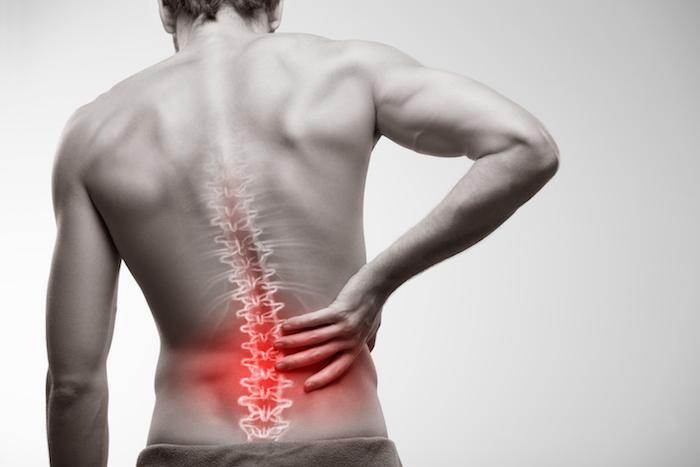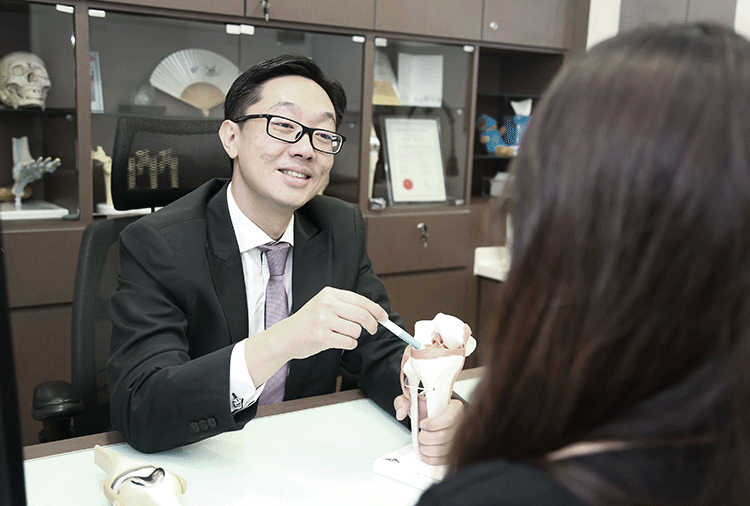Degenerative disc disease (DDD) is a condition that affects the intervertebral discs of the spine, leading to pain, reduced mobility, and other symptoms that can significantly impact daily life. This common condition often arises with ageing but can also result from injury or genetic factors.
What Is Degenerative Disc Disease, And Why Is Treatment Important?
Degenerative disc disease is characterised by the gradual breakdown of the intervertebral discs, which act as cushions between the vertebrae in the spine. As these discs wear down, they lose their ability to absorb shock and maintain flexibility, leading to pain, stiffness, and sometimes nerve compression.
Treatment is important because it helps manage pain, improve mobility, and prevent further degeneration. Without proper treatment, DDD can lead to chronic pain, decreased quality of life, and the development of other spinal conditions such as herniated discs or spinal stenosis. Effective management through physical therapy, medication, lifestyle changes, and in some cases, surgery can help maintain spinal health and functionality.
What Are The Causes And Risk Factors Of Degenerative Disc Disease?
Causes
- Ageing – The most common cause of DDD is the natural ageing process, which leads to the gradual wear and tear of spinal discs.
- Dehydration – Discs lose hydration and elasticity over time, becoming less effective as shock absorbers.
- Injury – Trauma to the spine, such as from a fall or car accident, can accelerate disc degeneration.
- Repetitive Stress – Continuous strain on the spine from heavy lifting, bending, or twisting can contribute to disc wear and tear.
- Genetics – A family history of DDD can increase the likelihood of developing the condition.
- Obesity – Excess body weight puts additional stress on the spine, contributing to disc degeneration.
- Smoking – Smoking can reduce blood flow to the discs, impairing their ability to repair themselves.
Risk Factors:
- Age – The risk of DDD increases with age, as discs naturally wear down over time.
- Genetics – A genetic predisposition can make individuals more susceptible to disc degeneration.
- Occupation – Jobs that involve heavy lifting, repetitive movements, or prolonged sitting can increase the risk.
- Lifestyle – A sedentary lifestyle or lack of regular exercise can weaken the muscles that support the spine.
- Obesity – Carrying excess weight adds strain to the spine, accelerating disc wear and tear.
- Smoking – Smoking is a significant risk factor as it impairs disc health and healing.
- Injury History – Previous spinal injuries can make the discs more vulnerable to degeneration.
What Are The Common Symptoms Of Degenerative Disc Disease?
Recognising the symptoms of Degenerative Disc Disease is crucial for early diagnosis and effective treatment. This condition can significantly impact daily activities and quality of life, so being aware of its signs is important for timely medical intervention.
- Pain – Persistent pain in the back or neck, which may worsen with movement or prolonged sitting and can radiate to other areas, such as the buttocks, thighs, or shoulders.
- Stiffness – Reduced flexibility and stiffness in the spine, especially after periods of inactivity or in the morning.
- Numbness and Tingling – Sensations of numbness, tingling, or weakness in the arms or legs due to nerve compression.
- Decreased Range of Motion – Difficulty bending, twisting, or performing other movements that involve the spine.
- Radiating Pain – Pain that radiates from the back to the extremities, often described as shooting or burning.
- Weakness – Weakness in the muscles served by the affected nerves, leading to difficulty with certain activities.
- Aggravation with Activity – Symptoms typically worsen with physical activity and improve with rest, although severe cases may experience constant discomfort.
How Is Degenerative Disc Disease Diagnosed?
Degenerative Disc Disease (DDD) is diagnosed through a thorough clinical examination and a series of diagnostic tests. Early diagnosis is key to managing symptoms and preventing further degeneration. Understanding the diagnostic process helps patients prepare for what to expect during a medical evaluation.
Clinical Examination
- Medical History – The doctor will ask about the patient’s medical history, including any previous back injuries, duration and nature of symptoms, and activities that worsen or alleviate pain.
- Physical Examination – This includes assessing the spine’s range of motion, flexibility, and overall alignment. The doctor will check for areas of tenderness, muscle weakness, and signs of nerve involvement.
- Neurological Exam – This involves testing reflexes, muscle strength, and sensation to identify any nerve compression or damage. The doctor may also assess gait and balance.
Diagnostic Tests
- X-rays – X-rays provide images of the spine and can reveal disc space narrowing, bone spurs, and other changes associated with DDD. They help in assessing the extent of disc degeneration.
- MRI – Magnetic Resonance Imaging (MRI) offers detailed images of the intervertebral discs, spinal cord, and surrounding structures. It is the most effective method for diagnosing DDD, as it shows disc dehydration, bulging, herniation, and other soft tissue abnormalities.
- CT Scan – A computed tomography (CT) scan provides detailed cross-sectional images of the spine and can help identify bone changes and the extent of disc degeneration.
- Discography – This specialised test involves injecting a contrast dye into the disc to identify which disc is causing pain. It is used less frequently but can be helpful in complex cases.
- Electromyography (EMG) – EMG tests the electrical activity of muscles and can indicate if nerve compression due to disc degeneration is affecting muscle function.
- Bone Scan – This test can help rule out other causes of back pain, such as infection or fractures, and assess the overall condition of the spine.
What Are The Degenerative Disc Disease Treatment Options?
Degenerative disc disease (DDD) is a condition where the intervertebral discs in the spine lose their cushioning ability and flexibility over time. This can lead to pain, stiffness, and reduced mobility. Treatment aims to alleviate symptoms, improve function, and slow disease progression. Here are the primary treatment options:
Conservative Management:
- Rest and Activity Modification – Short periods of rest can help manage acute symptoms, but prolonged inactivity is generally not recommended. Modifying activities to avoid aggravating movements and positions can help manage pain.
- Heat and Cold Therapy – Applying heat or cold packs can help relieve pain and reduce inflammation. Heat can relax muscles and improve blood flow, while cold packs can numb pain and reduce swelling.
Medications:
- Nonsteroidal Anti-Inflammatory Drugs (NSAIDs) – Over-the-counter NSAIDs like ibuprofen or naproxen can help reduce pain and inflammation.
- Acetaminophen – Provides pain relief if NSAIDs are not suitable or if additional pain management is needed.
- Muscle Relaxants – May be prescribed to alleviate muscle spasms associated with DDD.
- Opioids – For severe pain that does not respond to other medications, short-term use of opioid pain relievers may be considered, though they are generally used with caution.
Physical Therapy:
- Strengthening Exercises – A physical therapist can develop a program to strengthen the muscles supporting the spine, improving stability and reducing strain on the discs.
- Stretching and Flexibility Exercises – Stretching exercises can improve flexibility and reduce pressure on the discs.
- Posture Training – Learning proper posture and body mechanics can help prevent further strain on the spine.
Bracing and Support:
- Back Braces – A back brace may provide temporary support and reduce stress on the spine, particularly during periods of acute pain or when engaging in activities that exacerbate symptoms.
Injections:
- Epidural Steroid Injections – These injections deliver corticosteroids directly into the epidural space around the spinal nerves to reduce inflammation and pain.
- Facet Joint Injections – Targeted injections into the facet joints, which are small joints in the spine that can become inflamed, may help alleviate pain.
Surgical Options:
- Discectomy – A surgical procedure to remove the damaged portion of the disc that may be pressing on a nerve. This can help alleviate pain and improve function.
- Spinal Fusion – Involves fusing two or more vertebrae together to stabilise the spine and reduce pain. This is generally considered if conservative treatments fail or if there is significant disc degeneration.
- Artificial Disc Replacement – A surgical procedure to replace a damaged disc with an artificial one, aiming to preserve motion and reduce pain.
Alternative Therapies:
- Acupuncture – Involves inserting thin needles into specific points on the body to alleviate pain and promote healing.
- Chiropractic Care – Some individuals find relief through chiropractic adjustments, which aim to improve spinal alignment and function.
Prevention Strategies For Ligament Tear
Degenerative disc disease (DDD) can be part of the natural ageing process but can also be influenced by factors such as genetics, injury, or repetitive stress. Prevention strategies for degenerative disc disease aim to manage symptoms, improve spinal health, and prevent further degeneration. Here are some strategies:
- Engage in regular physical activity to strengthen the muscles supporting the spine, improve flexibility, and maintain a healthy weight. Focus on low-impact exercises such as walking, swimming, or cycling.
- Strengthen the core muscles, including the abdominals, obliques, and lower back muscles, to provide better support and stability to the spine. Incorporate exercises such as planks, bridges, and abdominal crunches.
- Incorporate stretching exercises into your daily routine to improve flexibility and range of motion in the spine and surrounding muscles. Focus on stretches that target the hamstrings, hip flexors, and lower back.
- Practice good posture habits by sitting and standing up straight with shoulders back and spine aligned. Use ergonomic furniture and equipment to support proper posture at work and home.
- Use proper lifting techniques to reduce strain on the spine. Bend your knees, keep your back straight, and lift with your legs rather than your back. Avoid twisting while lifting heavy objects.
- Maintain a healthy lifestyle by eating a balanced diet, staying hydrated, getting enough sleep, and managing stress. These factors contribute to overall spinal health and reduce the risk of degenerative disc disease.
- Smoking can accelerate disc degeneration by reducing blood flow and oxygen to the spinal discs. Quitting smoking can help slow the progression of degenerative disc disease.
- Schedule regular check-ups with your healthcare provider to monitor spinal health and address any underlying issues that may contribute to degenerative disc disease. Early detection and intervention can help prevent progression and improve treatment outcomes.






